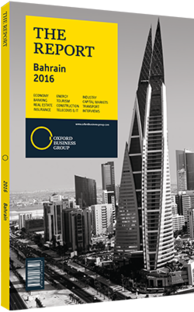Stopped construction projects under judicial review in Bahrain
As GCC money pours into infrastructure and housing projects in Bahrain, there are places where the skyline is still dominated by abandoned building sites that serve as reminders of the 2008 global economic downturn and property crash. Now, the government is taking legal action to confront the issue.
Royal Decree
Introduced in December 2014, Legislative Decree No. 66 created a judicial committee to consider stalled projects, particularly those where investors have been left out of pocket after purchasing property off-plan only to see the development grind to a halt. There are several sites in Bahrain where building work has ceased for five years, or has failed even to commence. The stalled projects are being managed by the office of the deputy prime minister. There are 18 stalled projects in total, with six of them referred to the committee, which will judge each case by a number of criteria to determine the extent and causes of the developers’ failure to build the property as promised and has been given the authority to remove the causes of delay or reach a settlement. “Timelines to agree a settlement and implement approved measures are sketchy, but in essence there seems to be around nine months for stakeholders to move forward,” Steve Mayes, CBRE Bahrain’s director of sales and agency, told OBG.
Villamar Progress
Perhaps the most high-profile stalled project in Bahrain is Villamar, three towers in the heart of Manama’s Financial Harbour. The site has been dormant for many years, the neglected skeletal concrete structures standing idle, partially clad in glass. However, during the summer, reports that the project was being placed back on track made front page news. On August 1, 2015 the developers Gulf Holding Company (GHC) announced that it had signed restructuring agreements with the original majority financier of the project, Al Rajhi Bank; the new financiers of the project, GFH Financial Group; and Al Hamad Construction, the original contractors. GHC said the project would be completed within 24 months. In a statement to Bahrain Bourse on the same day, GFH Financial Group said it would finance the “project’s completion and cover shortfalls up to an amount of $50m over the anticipated completion period”. The company added, “The agreement and the Villamar investment are expected to have a positive impact on GFH’s financial results in the medium term.” In a press release Hisham Alrayes, chairman of GHC, thanked Sheikh Khalid bin Abdulla Al Khalifa, the deputy prime minister and chairman of the Ministerial Committee for Reconstruction and Infrastructure for his help in ensuring progress.
Other Projects
Although Villamar may be the most visible stalled project for visitors to central Manama, Mayes points out that drivers entering Bahrain over the causeway are also confronted by Marina West, 11 unfinished towers intended for residential and hospitality use, while another stalled project, Amwaj Gateway, stands over the approach to Amwaj Islands. Other key developments with lower visibility include Al Areen; Park Island at the centre of Riffa Views, an upmarket gated community built around a golf course; and Marina Reef, on Reef Island. The challenge of stalled projects is not confined to Bahrain, but is seen across the Gulf region, with local media reports in 2014 suggesting there were no fewer than 166 in Dubai alone. “Sadly for Bahrain, due to the size of the market and the very prominent location of the failed projects, the detrimental impact on confidence in the market has been disproportionate to the numbers involved,” Mayes told OBG.
While the law is unlikely to act as a panacea for all the suffering experienced by investors in Bahrain’s property market, if developers, financiers and contractors on other stalled projects can follow an example hoped to be set at Villamar, confidence and trust may return. In the meantime, property professionals can only speculate on which schemes will be revived.
You have reached the limit of premium articles you can view for free.
Choose from the options below to purchase print or digital editions of our Reports. You can also purchase a website subscription giving you unlimited access to all of our Reports online for 12 months.
If you have already purchased this Report or have a website subscription, please login to continue.

